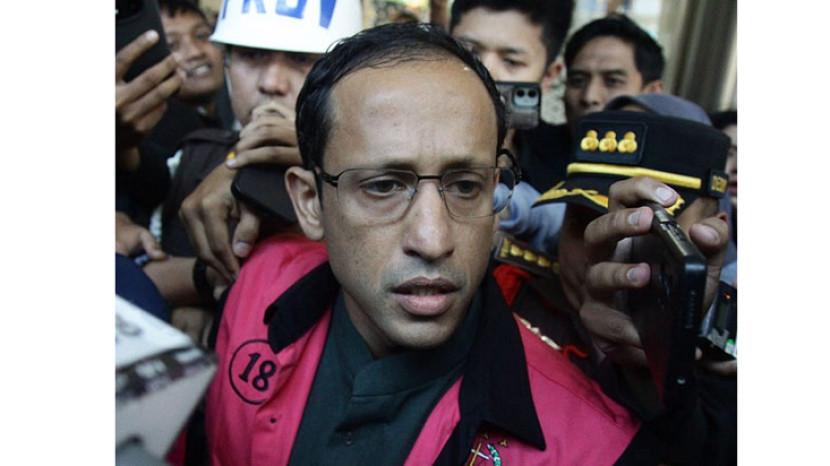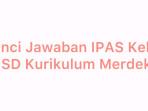Kunci Jawaban
Soal Bahasa Inggris Kelas 9 Kurikulum Merdeka Halaman 37 38, Kunci Jawaban Section 4: Nouns
Di bawah ini soal Bahasa Inggris Kelas 9 Kurikulum Merdeka halaman 37 38, kunci jawaban Section 4: Noun Groups
TRIBUN-BALI.COM, DENPASAR – Di bawah ini soal Bahasa Inggris Kelas 9 Kurikulum Merdeka halaman 37 38, kunci jawaban Section 4: Noun Groups.
Kali ini kita akan membahas soal pada Chapter 1 yang berjudul Bekantan sesuai dengan buku siswa Bahasa Inggris Kurikulum Merdeka edisi 2022.
Kunci Jawaban Bahasa Inggris Kelas 9 Kurikulum Merdeka Halaman 37
Kunci Jawaban Bahasa Inggris Kelas 9 Kurikulum Merdeka Halaman 38
Kunci jawaban di bawah ini diharapkan bisa membantu siswa sebagai alternatif jawaban untuk menyelesaikan soal pada halaman 37 38 di buku Bahasa Inggris Kelas 9 Kurikulum Merdeka.
Berikut kunci jawaban dan pembahasan soal Bahasa Inggris Kelas 9 Kurikulum Merdeka halaman 37 38 sesuai dengan buku siswa yang berjudul English for Nusantara.
Baca juga: Soal Bahasa Inggris Kelas 7 Kurikulum Merdeka Halaman 244 245 246 247 248 249, Progress Check 2
Update Kunci Jawaban
Kunci Jawaban Bahasa Inggris Kelas 9 Halaman 37 38 Kurikulum Merdeka
Unit 1. Bekantan
Section 4 - Language Focus
a. Noun Groups
Study the following explanation about how to describe the characteristics of an animal. Then, do the exercise that follows.
Number 1 has been done as an example.
To give more information about an animal, we can use a noun group.
Take a look at these examples:
• A long-nosed monkey
• A reddish-brown monkey
Baca juga: Soal Bahasa Inggris Kelas 7 Kurikulum Merdeka Halaman 238 239, Kunci Jawaban Section 5: Writing
A noun group is a group of words around a noun or a headword. It contains a main noun (e.g. A monkey).
The other words in the noun group such as long-nosed, reddish-brown are adjectives. They tell more about the main noun.
We write the adjectives before the noun. Let’s take a look at the following examples:
• Monkey
• The monkey
• The big monkey
• The big, long-nosed monkey in a mangrove tree
• The big, long-nosed, reddish-brown monkey in a mangrove tree
• The big, long-nosed, reddish-brown monkey in a mangrove tree is playing.
The noun groups above are all about a monkey. We can see that as the sentences get longer, the adjectives give us more information about the monkeys.
The descriptive words help us picture the monkey clearly. Using noun groups helps us to communicate a lot of information in a quick way.
Baca juga: Soal Bahasa Inggris Kelas 7 Kurikulum Merdeka Halaman 237 238, Kunci Jawaban Section 4: Writing
1. The two big, long-nosed, hairy monkeys are climbing the mangrove trees.
2. A strong, large, black gorilla is feeding on bamboo shoots.
3. That big, tall, grayish black mammal is called an elephant.
4. Orangutans are large, reddish-orange primate that are famous for their intelligence.
5. The female Helmeted Hornbill has a bluish white featherless patch on its neck.
6. Komodo dragons are the largest living lizards on Earth.
Jawaban:
1. The two big, long-nosed, hairy monkeys.
2. A strong, large, black gorilla.
3. Big, tall, grayish black mammal.
4. Large, reddish-orange primate
5. A bluish white featherless patch.
6. The largest living lizards.
Demikian soal Bahasa Inggris Kelas 9 Kurikulum Merdeka halaman 37 38, kunci jawaban Section 4: Noun Groups sesuai dengan buku yang berjudul English for Nusantara.
Disclaimer
Kunci jawaban diatas bersifat alternatif jawaban sehingga para siswa bisa memberikan eksplorasi jawaban lain.
Kunci jawaban soal diatas bisa saja berbeda sesuai dengan pemahaman tenaga pengajar atau murid. (*)















Isi komentar sepenuhnya adalah tanggung jawab pengguna dan diatur dalam UU ITE.